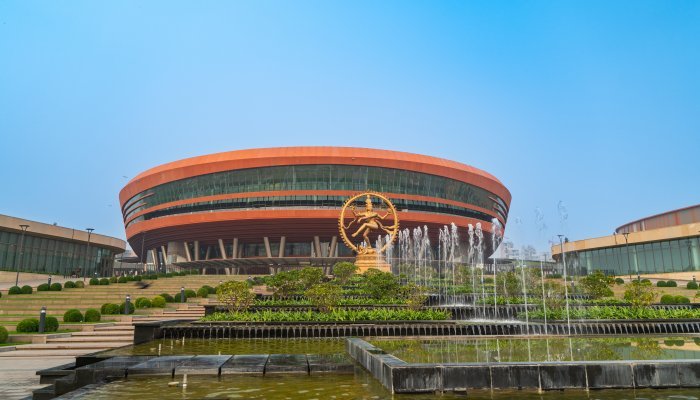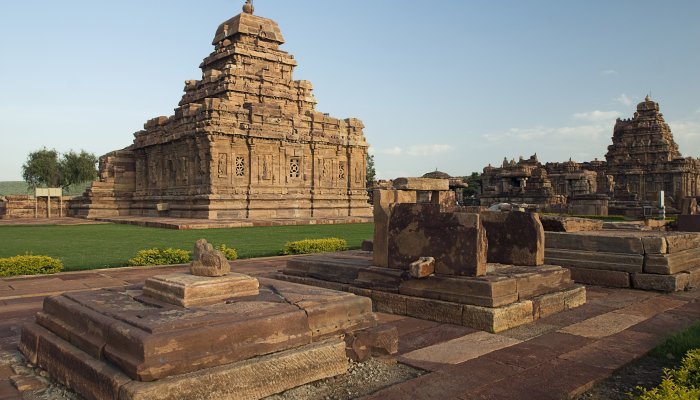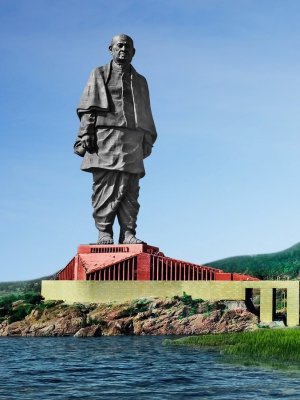In a world brimming with travel destinations, India stands out as a vibrant tapestry of colours, flavours, and experiences, which is why it should be at the top of everyone’s travel bucket list.
It is said a visit to India is an ‘emotion’, so let’s take a journey through some of the sights that will enchant and inspire you.
Varanasi
If you’re looking for an experience steeped in spirituality, mythology, and rich cultural heritage, then make Varanasi your destination of choice. Nestled along the banks of the sacred Ganges River, the city (also known as Kashi or Banaras) is one of the world’s oldest continuously inhabited cities.
On the ghats, the stone steps that lead down to the riverbank, life is abuzz with pilgrims draped in vibrant hues of saffron and crimson while barefoot sadhus, with ash-smeared foreheads and matted locks, sit in silent meditation. The air is infused with the scent of marigold garlands and sandalwood incense, mingling with the earthly aroma of freshly brewed chai.
Along the banks, ancient temples stand sentinel, their intricate carvings, marble balconies, and ornate courtyards showcasing the grandeur of Varanasi’s royal past.
Witness the mesmerising Ganga Aarti ceremony at Dashashwamedh Ghat, where priests clad in vibrant attire perform rhythmic rituals, accompanied by the melodic strains of devotional hymns. A boat ride along the Ganges during sunrise or sunset is a quintessential Varanasi experience.
The narrow lanes of Varanasi bustle with life, lined with shops selling everything from colourful textiles, souvenirs, and religious artefacts to fragrant spices and street food.
In this ancient city, every corner is a celebration of the divine and the cycle of life and death, so unsurprisingly here you’ll find one of the holiest Hindu temples in India, the Kashi Vishwanth Temple, revered as the ‘Golden Temple’ for its opulent gold plating.
Varanasi is also famous for its production of silks and brocades with gold and silver threadwork and is the largest seller of Banarasi silk. Such is the level of craftsmanship that it can take up to six months to complete a single Banarasi sari!
In the heart of Varanasi lies the sprawling campus of Banaras Hindu University (BHU) – not just a revered educational institution, but a cultural icon embodying India’s timeless wisdom, cultural heritage, and intellectual prowess. The BHU Library is one of largest academic libraries in Asia, housing more than 15 million books and the library’s cool, hushed interior also provides a welcome escape from the heat and hustle of the outside world.
Where the sacred and serene Ganges shimmers with reflections of a thousand prayers whispered into its waters, Varanasi beckons travellers with its mesmerising blend of ancient traditions and bustling modern life.
Konark
But if your interests lie in culture, history, exquisite architecture & tranquil retreats, then make your way to the town of Konark on the Bay of Bengal coastline in the Indian state of Odisha.
Here you will find the iconic Konark Sun Temple built in black granite in the 13th century and currently a Unesco World Heritage Site. Dedicated to the Sun God Surya, the temple was constructed in the shape of his sun chariot, with exquisitely carved wheels and galloping horses and when viewed from inland at sunrise, the chariot-shaped temple appears to emerge from the depths of the blue sea carrying the sun. A testament to ancient craftsmanship and artistry, the temple features intricate stone carvings depicting scenes from Hindu mythology, erotic sculptures and exquisite designs. In a glimpse of the finest achievement of a lost masonry style, the wheels of the temple are sundials, which can be used to calculate time accurately to a minute.
Such is its importance to Indian cultural heritage that the Konark Sun Temple is depicted on the reverse side of the Indian 10-rupee currency note.
The Sun Temple also provides the backdrop for the renowned annual Konark Dance Festival – a cultural extravaganza celebrating the rich heritage of Indian classical dance and music that mesmerises visitors from around the world.
Konark is also known for its rich maritime history, and you can still hear the echoes of sailors and bustling port traders as you walk along its pristine beaches of golden sands and clear blue waters.
Steeped in history, culture and natural beauty, Konark will give you a glimpse into India’s glorious past and vibrant present.
Delhi
If you prefer a destination steeped in rich heritage yet bustling with contemporary energy, then look no further than Delhi, the vibrant capital city of India, which serves as a gateway to the country’s diverse tapestry of history and modernity.
Delhi’s skyline is adorned with timeless monuments, temples, and mosques, reflecting the grandeur and opulence of India’s imperial past and the country’s religious diversity. Visit the iconic Red Fort, a Unesco World Heritage Site, with its intricately carved red sandstone walls, and the architectural masterpiece of the Lotus Temple, shaped like a blooming lotus flower – a symbol of unity and tranquillity.
This city of contrasts allows you to experience the bustling bazaars of Chandni Chowk in the old part of Delhi brimming with colours, aromas, and flavours, together with the modern-day splendour of the sprawling avenues, lush gardens, and majestic government buildings housing all three branches of the government of India, including the Supreme Court.
And in the heart of the capital lies a serene sanctuary that serves as the final resting place of Mahatma Gandhi, the preeminent leader of India’s freedom movement. The memorial, marked by a black marble platform, signifies simplicity and humility, mirroring Gandhi’s own life and teachings.
Another must-visit is the nearby Akshardham Temple, a sprawling complex showcasing Indian art, culture, and spirituality. To preserve its sanctity and spiritual ambience, a strict dress code operates within the complex and no electronic devices, handbags, food, or drink are allowed to be taken in. For those who seek solace, inspiration, and transcendence, Akshardham and its soul-stirring evening aarti ceremony offers a sanctuary where the divine meets the mortal.
By the way, an Akshardham Temple was recently added to the modern skyline of Abu Dhabi – a monument of divine grandeur and architectural splendour, serving as a serene retreat and cultural hub, inviting visitors to delve into the rich tapestry of Hindu spirituality and culture.
And the largest Akshardham Temple in the southern hemisphere is being planned for Johannesburg – a visionary endeavour poised to become a beacon of spiritual sanctity and cultural exchange.
Connecting this bustling metropolis of Delhi is the Delhi Metro Rail System – one of the largest and most comprehensive metro systems in the world, powered by clean energy sources and boasting state-of-the-art-technology and several unique features, including carriages for the exclusive use of female commuters.
Delhi’s history is etched in every stone, reminding us of the resilience of a city that has witnessed the rise and fall of civilisations.
Kevadia
If you’re seeking both cultural immersion and natural beauty, then look no further than the quaint town of Kevadia, nestled in the heart of Gujarat.
The town holds immense significance as it is the home to the iconic Statue of Unity, the world’s tallest statue (at 182 metres), dedicated to Sardar Patel, often referred to as the ‘Iron Man of India’. This colossal monument stands as a tribute to his pivotal role in the unification of India post-independence and serves as a beacon of national pride and unity.
For botanical enthusiasts and nature lovers, a visit to the colourful and fragrant Valley of Flowers, the intriguing Cactus Garden, and the pristine Zarwani Waterfall are all must-visit destinations. The Sardar Sarovar Dam is a testament to human ingenuity and engineering prowess and offers panoramic views of the surrounding landscape.
Kevadia, a hidden gem, is fast becoming a favourite for travellers, captivating them with her charm and blend of history, culture, and natural splendour.
These are but a snapshot of the myriad gems available to explore in India – a nation rich in history, steeped in tradition, and bound by diversity. Maya Angelou said, “They may forget your name, but they’ll never forget how you made them feel.” And once you visit India, you’ll never forget how she made you feel, and with so much left to explore, you’ll want to return again and again.
Unlocking tourism potential
Expanding the perceptions and narratives around travel in India is key to unlocking the potential for tourist travel from South Africa.
- Affordability
India remains one of the most affordable tourist destinations in the world, offering excellent value for money. Reputable Indian/local tour operators can package a holiday in India (budget or luxury) at a fraction of the cost of a shorter holiday to nearly all the most popular destinations for South Africans travelling abroad.
- Accessibility
An efficient e-Visa system is in place which is also free of charge for South African nationals.
- Variety
Whether you’re looking for a thrill-seeking adventure, romantic getaway, destination wedding venue, relaxation, spiritual enlightenment, culinary delights, or just immersion into a fascinating new culture, you’ll find it all in India. From historical marvels to modern, bustling metropoles, you’ll experience the coexistence of tradition and modernity that gives India its unique appeal.
- Hospitality
“Atithi Devo Bhava” loosely translated means “A guest is akin to God” – this ‘code of conduct’ for Indian society highlights an ancient philosophy of revering guests with the same respect as a god. Tourists/visitors are always welcomed with warmth, grace, and generosity. Only in India will you meet people as strangers and leave as part of the family.
Travel to India on the cards?
Untapped opportunities include:
- Catering for more tailored/specialised tours, considering the variety of experiences possible in India. ‘Thematic tourism’ around wellness, culinary exploration, and eco-tourism could further expand the scope of tourism options for the South African traveller.
- Greater collaboration and partnerships with Indian tour operators to leverage their local expertise and resources. This will also open opportunities for more comprehensive packages to facilitate the ease of travel for the South African visitor.
- Promotions and digital marketing means leveraging traditional and social media platforms more frequently and with more compelling campaigns that can compete for the attention and wallet of the South African traveller, in the same way as is done for places such as Mauritius, Bali, and Dubai.
- Currently under negotiation, the re-introduction of direct flights between South Africa and India will greatly enhance and encourage opportunities to travel to India.
Agra – beyond the Taj Mahal
If you find yourself in Agra, take a moment to explore beyond the Taj Mahal to discover other iconic sites scattered across this historic cityscape, primarily:
- The Agra Fort
A Unesco World Heritage Site, also known as the Red Fort of Agra, it stands as a silent sentinel to the city’s rich history. Its imposing red sandstone walls enclose a plethora of exquisite palaces, mosques, and gardens, each reflecting the opulence and grandeur of Mughal dynasties and architecture.
- Fatehpur Sikri
Another Unesco World Heritage Site, the city served as the capital of the Mughal Empire for a brief period before being mysteriously deserted. A mesmerising complex now frozen in time, its stunning architectural masterpieces including the Buland Darwaza, the Jama Masjid, and the intricately carved Panch Mahal, echoing tales of a bygone glory.
Did you know?
- India has 42 Unesco World Heritage Sites of cultural, natural, and mixed significance. India has the sixth-most sites worldwide.
- The first sites to be listed were the Ajanta Caves, Ellora Caves, Agra Fort, and Taj Mahal in 1983 and the most recent were Santiniketan and the Sacred Ensembles of the Hoysalas, in 2023.
- India also has 15 heritage elements on Unesco’s list of Intangible Cultural Heritage, with the latest inclusions being:
- Diwali – the Hindu festival of lights, symbolising the spiritual victory of light over darkness, or good over evil. The celebrations generally last five to six days with celebrants illuminating their homes, temples and workspaces with diyas (oil lamps), candles and lanterns.
- Garba – a ritualistic and devotional dance that is performed on the occasion of the Hindu festival of Navaratri, which is dedicated to the worship of the feminine energy or ‘Shakti’.
- Durga Puja – an annual festival celebrated in September/October, most notably in Kolkata (West Bengal), but also in other parts of India and among the Bengali diaspora. It marks the ten-day worship of the Hindu mother-goddess Durga.









